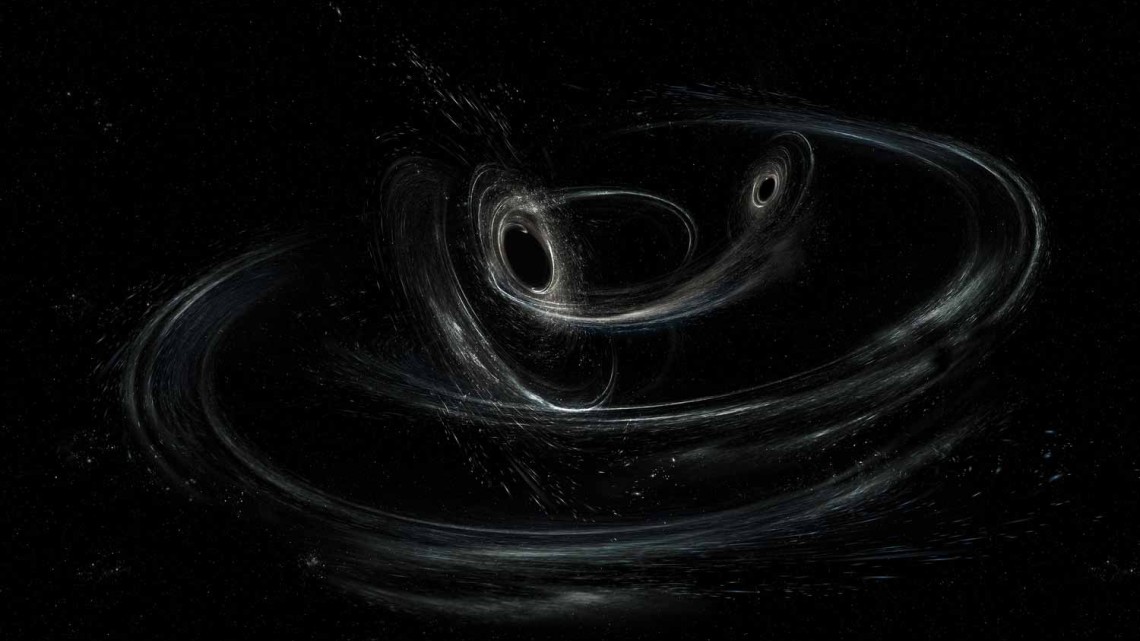
An artist's conception of a precessing binary black hole. The black holes, which will ultimately spiral together into one larger black hole, are shown here orbiting one another in a plane. The black holes are spinning in a non-aligned fashion, which means they are tilted relative to the overall orbital motion of the pair. This causes the orbit to precess like a top spinning along a tilted axis.
News directly from Cornell's colleges and centers
Binary black hole spin behavior revealed using novel techniques
By Kate Blackwood
Research done at Cornell has uncovered from gravitation wave data the first potential signs of spin-orbit resonances in binary black holes, a step toward understanding the mechanisms of supernovas and other big questions in astrophysics.
"These resonances were predicted over a decade ago using Einstein’s theory of general relativity,” said astrophysicist Vijay Varma. A former Klarman Postdoctoral Fellow in the College of Arts & Sciences (A&S), Varma analyzes gravitational waves detected by the Laser Interferometer Gravitational-Wave Observatory (LIGO) and the Virgo gravitational wave detector in order to learn more about binary black holes. “We find the first ‘hints’ of the resonances in gravitational wave data from LIGO and Virgo.”
The rate at which a black hole spins reveals a lot about its history, Varma said: for black holes arranged in an interactive pair, called a binary, the direction of each black hole’s spin is also revelatory, especially in relation to one another.
Media Contact
Get Cornell news delivered right to your inbox.
Subscribe
